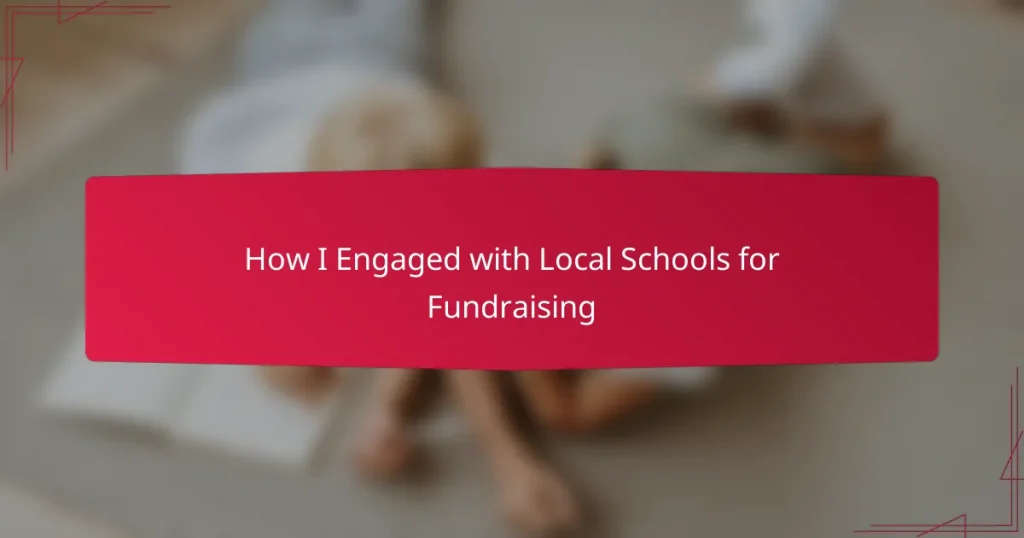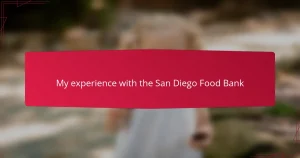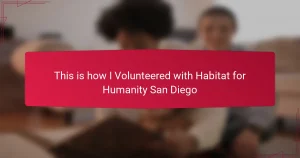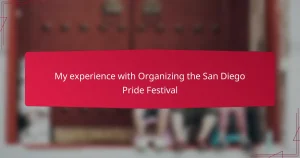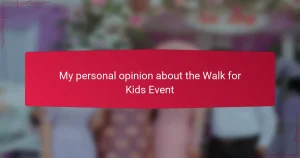Key takeaways
- Family fundraising is about building connections and understanding diverse motivations within communities to drive support.
- Local school fundraising in San Diego benefits from community spirit, with various creative events fostering collaboration between families, staff, and businesses.
- Listening to school staff and adapting approaches based on their insights cultivates stronger partnerships and enhances fundraising efforts.
- Sharing personal fundraising experiences, both successes and challenges, encourages community involvement and inspires others to participate.
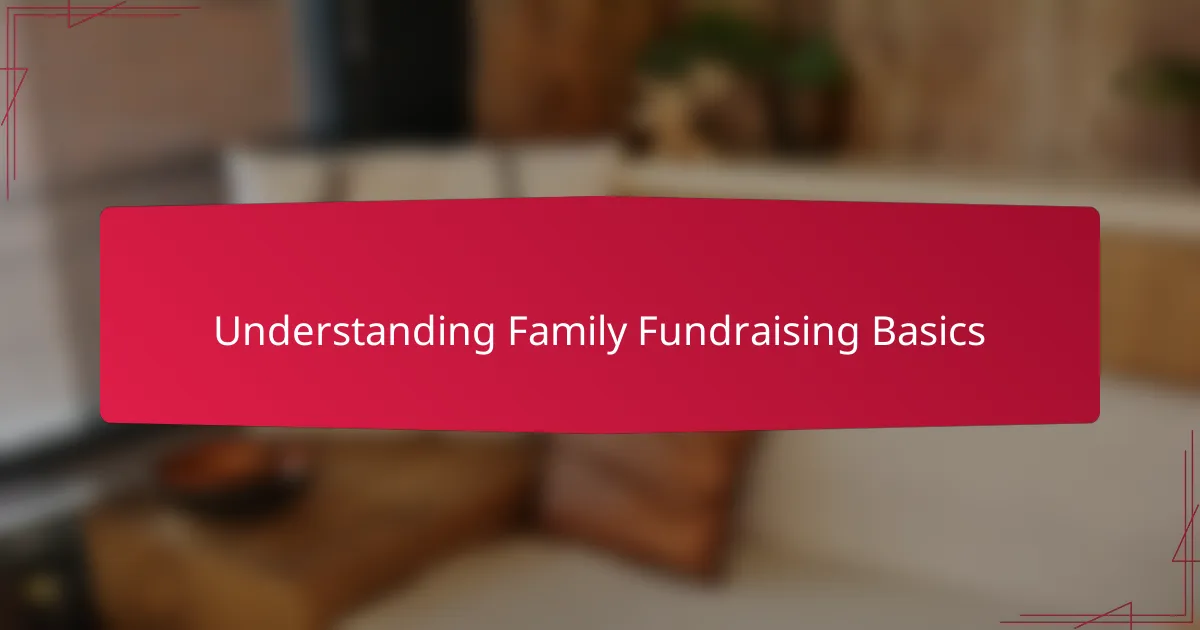
Understanding Family Fundraising Basics
Family fundraising, at its core, is about bringing people together for a cause that resonates deeply within a community. When I first got involved, I realized it wasn’t just about collecting money; it was about creating connections and shared purpose. Have you ever noticed how a simple conversation can spark enthusiasm and generosity?
One thing I learned early on is that understanding the unique dynamics of each family helps tailor the fundraising approach effectively. Families have different motivations and capacities, and acknowledging this diversity made my efforts more meaningful and successful. It’s about listening as much as it is about asking.
Fundraising isn’t just a task; it’s an opportunity to weave a stronger fabric within the community. I’ve seen firsthand how involving families creates a ripple effect of support that extends beyond financial contributions. Isn’t that what makes fundraising feel truly rewarding?
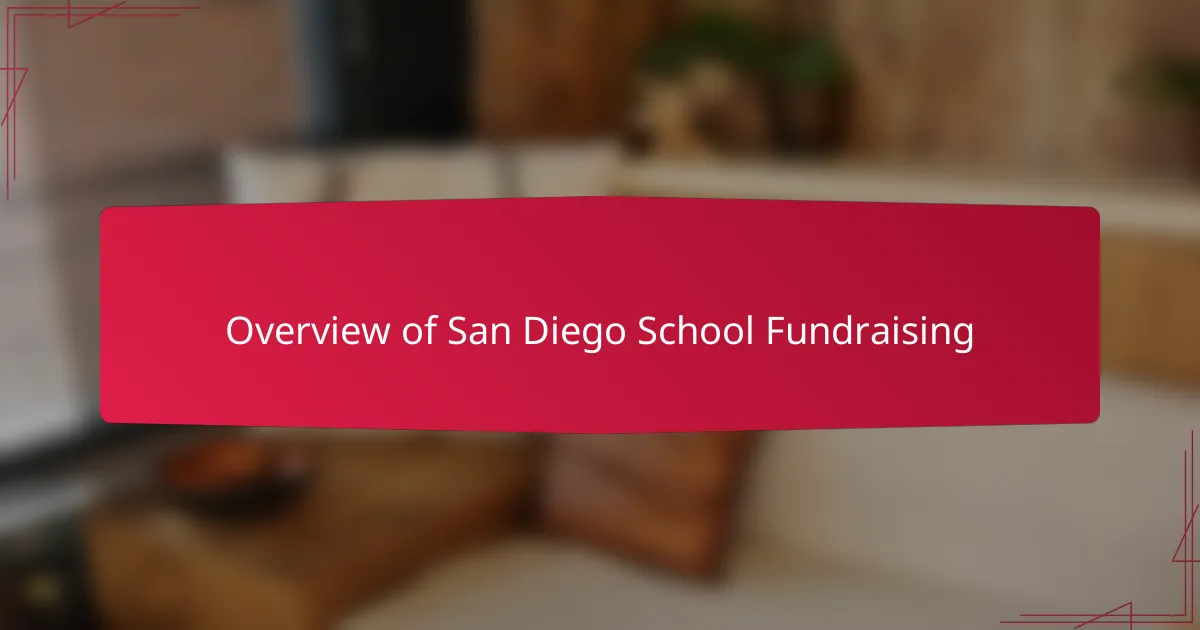
Overview of San Diego School Fundraising
In San Diego, school fundraising has a special flavor because it blends a strong community spirit with a commitment to local education. When I first dove into these efforts, I noticed how schools here aren’t just institutions; they’re hubs where families, teachers, and neighbors come together for a shared mission. Doesn’t it feel more inspiring to support a cause when you know it directly touches children you know?
What struck me most was how diverse the fundraising activities could be. From fun runs and bake sales to silent auctions and community fairs, each event reflects the unique character of the school and its families. Being part of these varied efforts taught me that flexibility and creativity matter just as much as the fundraising goals.
I also found that San Diego’s schools benefit a lot from local businesses and volunteers stepping up. This collaboration creates a powerful network that lifts not only the schools but the whole community. Have you ever experienced that sense of pride when you see everyone rallying behind a common cause right in your neighborhood? That’s the magic of San Diego school fundraising.
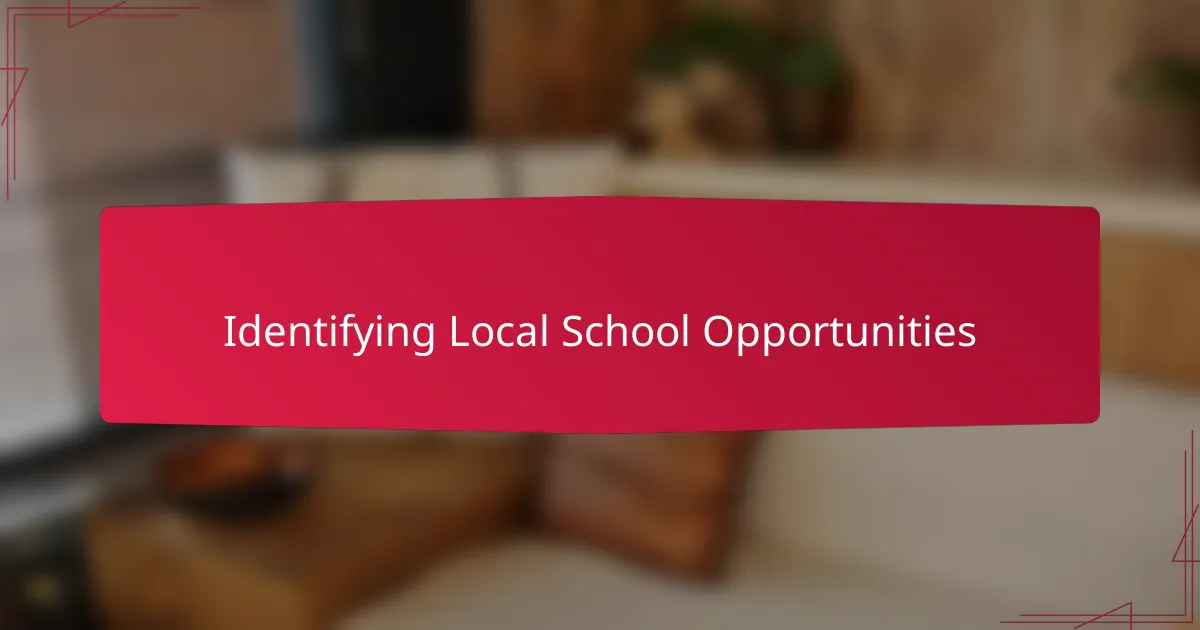
Identifying Local School Opportunities
Finding the right local schools to partner with was a crucial first step for me. I reached out to school administrators and parent-teacher associations to understand their specific needs and upcoming events. Have you ever noticed how open and eager educators can be when they see genuine interest in supporting their community?
I quickly realized that every school had its own rhythm and priorities. Some schools were gearing up for sports fundraisers, while others focused more on arts programs. This variety made me think about how important it is to listen closely before jumping in—what works for one school might not resonate with another.
One moment that sticks with me is when a principal shared stories about past fundraisers and what made them successful or challenging. That insight shaped how I approached my involvement, making sure I aligned my efforts with the school’s culture and goals. Have you ever found that a little background knowledge can transform your whole approach? That’s exactly what happened in my case.
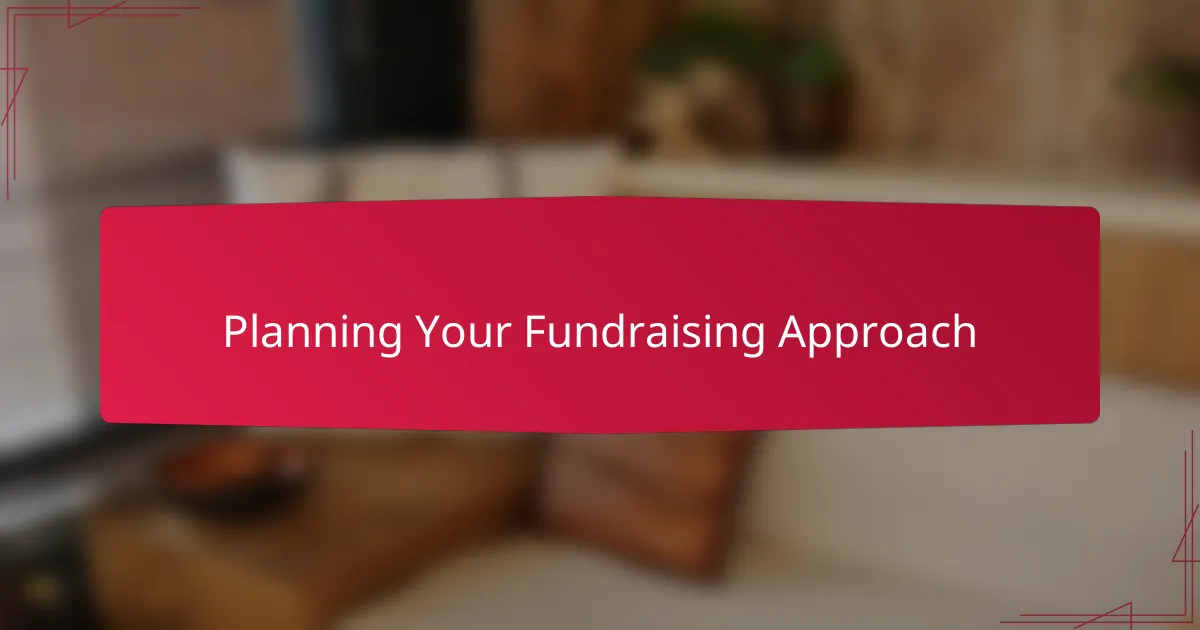
Planning Your Fundraising Approach
Planning a fundraising approach felt like piecing together a puzzle to me. I knew I had to map out clear goals but also remain flexible enough to adapt to the school’s vibe. Have you ever started a project unsure where it might go but stayed open to discovering the best path forward?
I found it helpful to draft a timeline that balanced ambition with realism—setting milestones that kept momentum without overwhelming anyone involved. In one instance, pacing our efforts allowed families and volunteers to feel excited rather than pressured, which made all the difference.
Also, asking questions upfront was a game-changer. What resources were available? What times worked best for parents and teachers? These conversations didn’t just inform the plan; they built relationships that made executing the plan smoother and more rewarding. Have you ever noticed how collaboration can turn a simple plan into something far richer?
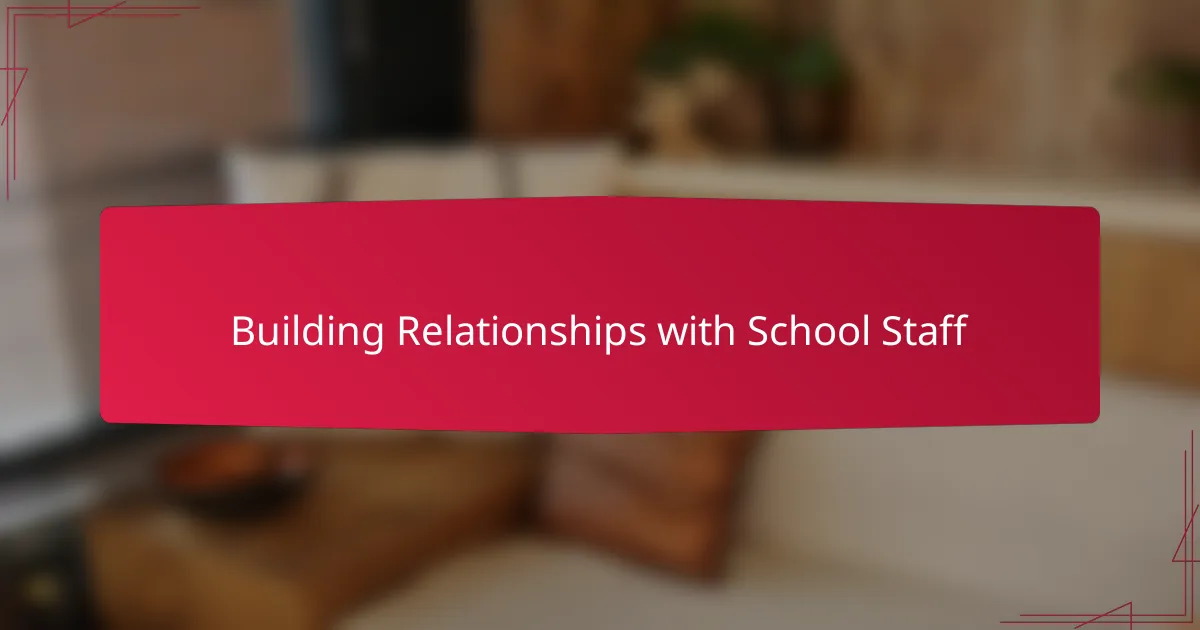
Building Relationships with School Staff
Building relationships with school staff started for me with simple gestures—introducing myself at meetings and genuinely listening to their perspectives. It amazed me how much trust and openness can grow from just showing up consistently and expressing sincere interest.
One memorable moment was when a teacher shared her concerns about balancing fundraising expectations with classroom demands. That conversation shifted my approach entirely; I began to see staff not just as coordinators but as partners bearing real challenges. Have you ever had a chat that fundamentally changed how you viewed a collaboration?
Over time, these connections made communication smoother and efforts more aligned. I learned it’s crucial to respect their time and expertise while staying flexible. After all, doesn’t working alongside those who know the school best feel like the smartest way to make a meaningful impact?
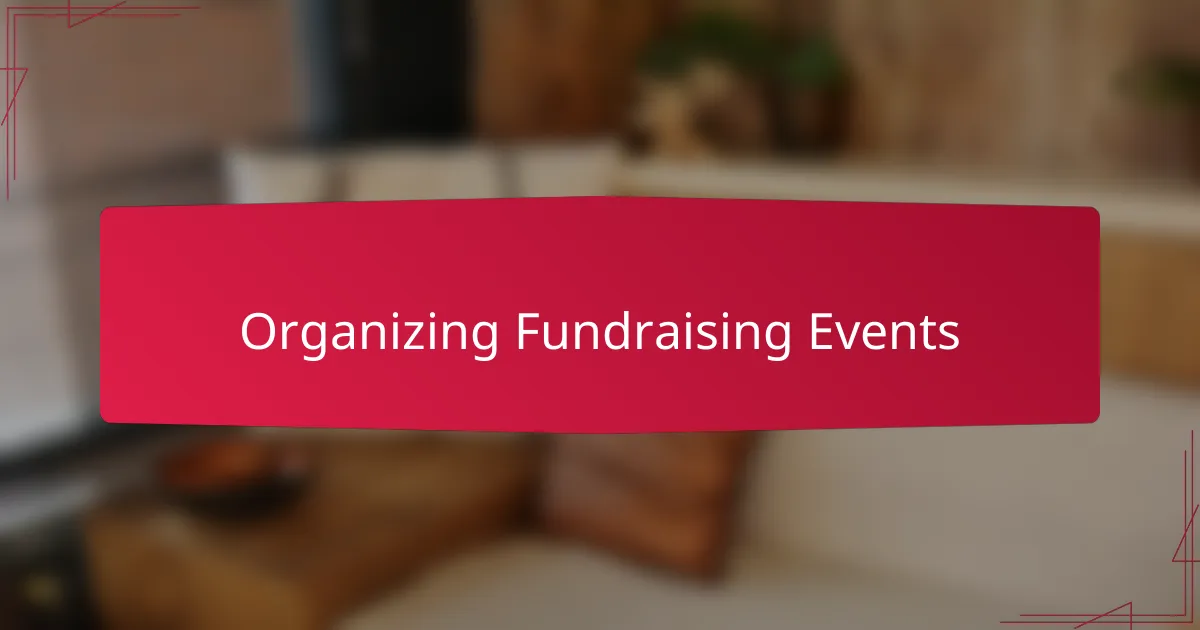
Organizing Fundraising Events
Organizing fundraising events felt like stepping into a lively community workshop where everyone had ideas to share—and energy to give. I remember coordinating a family-friendly carnival at a local school, and how the buzz of laughter and teamwork made all the planning challenges melt away. Have you ever experienced how the excitement of a shared event turns strangers into allies almost instantly?
Each event required balancing creativity with practicality. For example, when planning a bake sale, I quickly learned that simple treats made by families often brought the most smiles and donations, more than elaborate setups ever could. It taught me that the heart of these events isn’t perfection but participation.
What stood out most was how organizing became a way to spotlight the school’s unique spirit. From talent shows celebrating students to walk-a-thons energizing the whole neighborhood, these gatherings weren’t just fundraisers—they were vibrant expressions of community pride. Doesn’t that make every effort feel worthwhile beyond the funds raised?
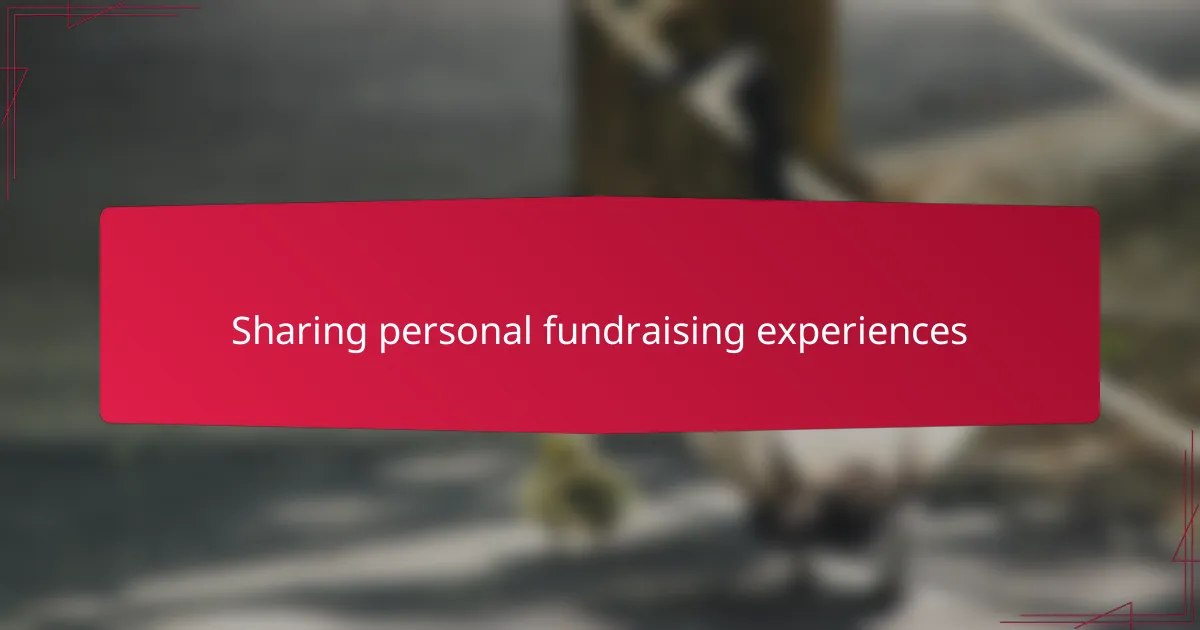
Sharing Personal Fundraising Experiences
One of the most rewarding parts of my fundraising journey was sharing my own experiences with others in the community. I found that opening up about both successes and setbacks made my efforts feel more authentic and relatable. Have you ever noticed how personal stories can spark new ideas and inspire others to get involved?
I recall a moment during a school meeting when I shared how a simple neighborhood garage sale turned into a surprisingly effective fundraiser. Hearing my story, another parent approached me afterward, eager to try something similar. It reminded me that fundraising isn’t just about the money—it’s about creating connections through shared experiences.
Sometimes, being transparent about challenges opened the door for collaboration. Talking candidly about a fundraiser that didn’t meet expectations led to brainstorming sessions that ultimately improved future events. Isn’t it interesting how vulnerability can build stronger partnerships? That’s a lesson I carry with me every time I engage with local schools.
